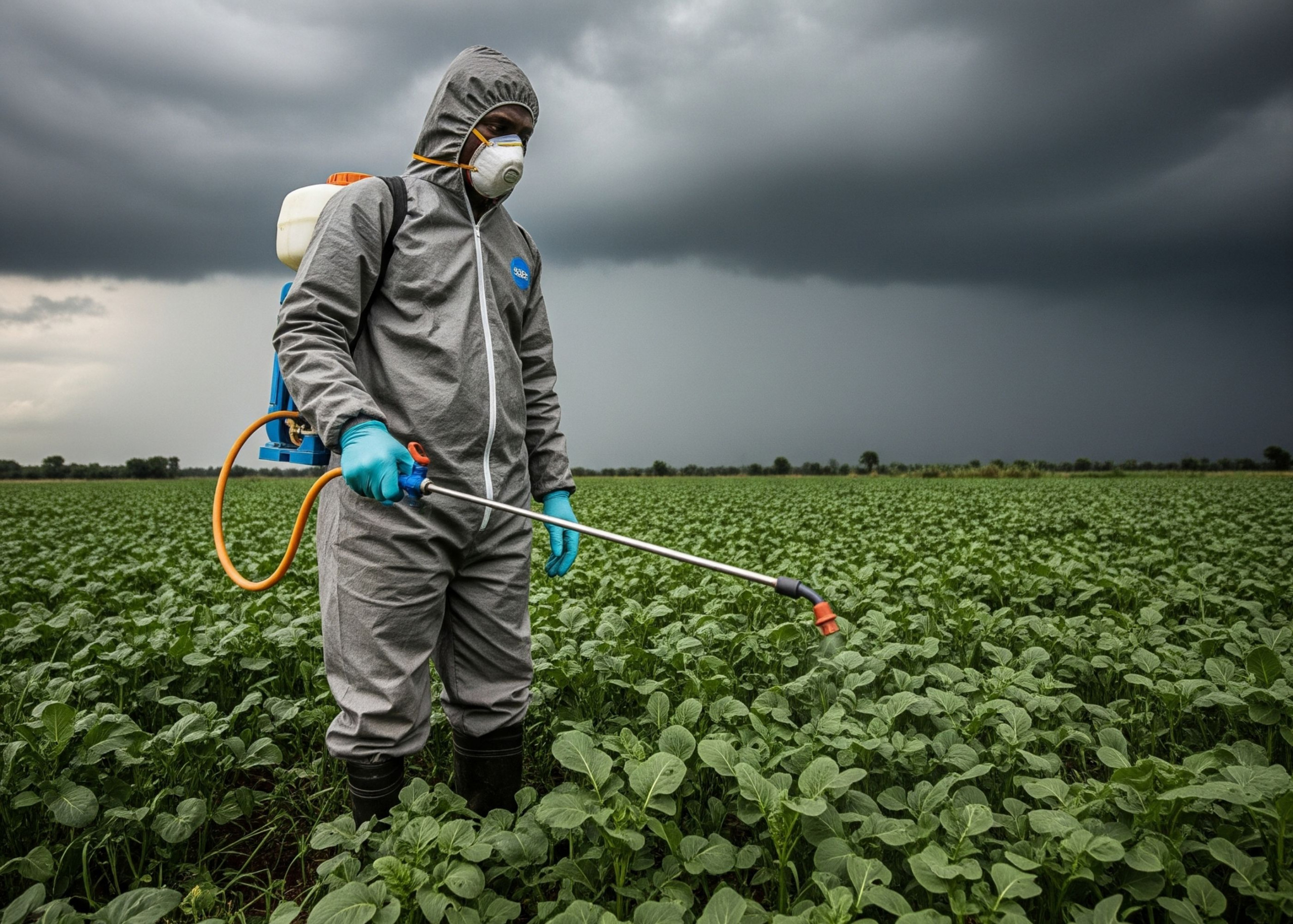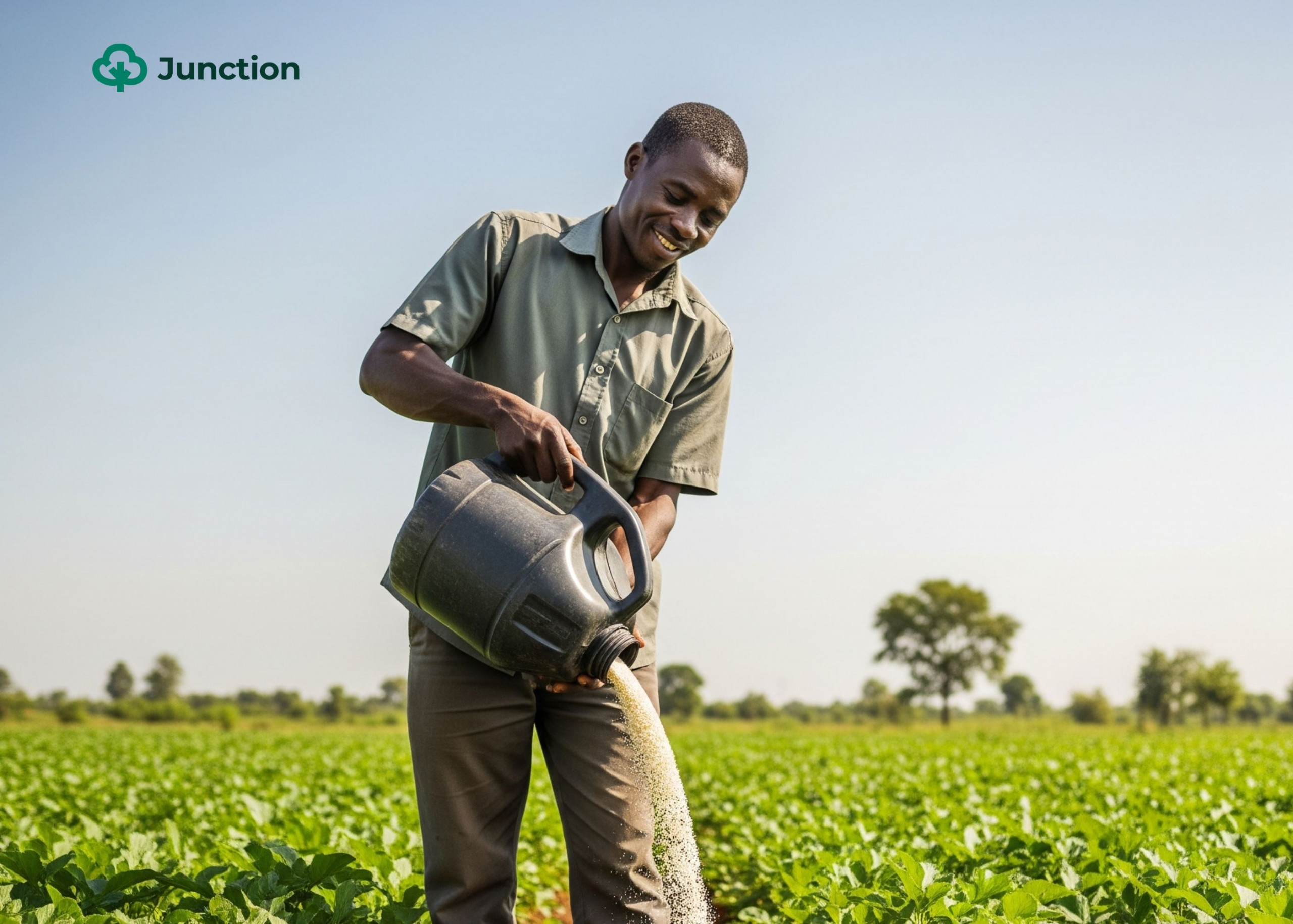The rainy season always presents a dilemma for farmers. While the rapid growth of crops is more assured in the wet season, this period also brings its own set of formidable challenges, none more persistent than the relentless growth of weeds. Just like plants, weeds are also fueled by abundant moisture, and they easily outcompete crops for vital nutrients, sunlight, and space, threatening a successful growing season.
This situation often calls for weed control activities like herbicide application. However, using herbicides during the rainy season takes more than just simple application knowledge; it requires deeper technical know-how. The sight of a cloudy sky and the crackling sound of thunder announcing an impending rain, which should be pleasant to a farmer, often turns sour after applying herbicide on the farm. This is because rainfall after herbicide application often reduces its effectiveness and even increases the chances of phytotoxicity of plants.
In this article, we will provide a comprehensive guide for herbicide application in the rainy season, drawing from expert insights and practical experiences, to help you ensure effective weed control on your farm even in the wet season.
Before we move into the practical tips, let’s first break down some important terms that farmers need to know about herbicide application in the rainy season.
Important knowledge for herbicide application in the rainy season
1. Rainfast Period
This is the minimum time herbicides, or other farm chemicals, need to be absorbed into plants or soil before rain can affect their efficacy. If rain falls before this period has elapsed, the herbicide won’t work as expected due to reduced absorption and translocation within the plant, affecting eventual weed control.
The rainfast period can vary significantly between products. For example, glyphosate and paraquat require about 30 minutes, while 2,4-D may need 6 hours or more before rainfall. It is important to always read the product label for specific rainfast requirements.
2. Herbicide Solubility
The rate at which a chemical dissolves when it comes in contact with solvents like water is called solubility. Herbicides have different solubility levels, which determine their resilience under heavy rainfall.
Solubility level of herbicides ranges from low solubility (which translates to high resilience to wash-off) to Medium solubility (medium resilience) and High solubility (lowest resilience).
Low solubility herbicides like atrazine and Zidua-containing products are less prone to wash-off, whereas medium to high solubility ones like s-metolachlor are more vulnerable to leaching and reduced efficacy after rain.
3. Leaching and Loss of Residual Activity
Leaching occurs when heavy rain causes residual herbicides to move downwards through the soil, often out of the weed germination zone. This downward movement reduces the herbicide concentration where weeds are still growing, resulting in poor weed control and increased weed escapes.
The extent of leaching is also influenced by soil type. Sandy, shaley, or coarse soils with low organic matter are more prone to significant herbicide leaching and loss. In contrast, soils with medium or heavy textures and higher organic matter content tend to retain herbicides better.
4. Phytotoxicity
This refers to adverse effects on plant growth, physiology, or metabolism caused by chemical substances. Phytotoxicity can occur due to exposure to high levels of fertilisers, herbicides, heavy metals, or nanoparticles.
It can affect various aspects of plant development, from seed germination to leaf development and flowering. These effects can include altered plant metabolism, growth inhibition, or plant death.
Best practices for herbicide application during the rainy season
- Learning about the herbicide product you are using is important. Read about their rainfast period, solubility level and formulations to know how best to apply them.
- Monitor weather forecasts to apply herbicides during dry windows to avoid instances where rain falls immediately after application and washes off the chemical agents, thereby compromising weed control.
- Select herbicides with low water solubility and formulations that reduce crop injury, such as encapsulated types over emulsifiable concentrates.
- Apply herbicides to dry leaves and use sprayer nozzles that produce optimal droplet sizes for better retention.
- Utilise adjuvants or specialised formulations that enhance rainfastness and help the herbicide bind to soil or plant surfaces, thereby reducing movement during heavy rains.
- Ensure good field drainage to minimise leaching and avoid application on saturated soils.
- Consider split applications (smaller, repeated doses) to maintain weed control despite frequent rains.
- Ensure Post-rainfall monitoring to detect weed escapes and timely reapplication of post-emergence herbicides if necessary, while avoiding unnecessary pre-emergent reapplications.
Benefits of employing these tips
Adhering to these tips is not merely about following best practices; it’s about safeguarding your investment, maximising your yields, and ensuring the long-term profitability of your farm. The benefits include:
- Maximised Effectiveness and Efficacy: By ensuring the herbicide has adequate time to be absorbed and activated, you achieve the best possible weed control, preventing dilution and wash-off. This means the product you paid for does its job.
- Maintained Residual Activity: Proper application techniques prevent herbicides from leaching out of the critical weed germination zone, ensuring continuous control over emerging weeds.
- Reduced Crop Injury: By avoiding applications when crops are stressed, choosing appropriate formulations, and understanding herbicide movement, you protect your valuable crops from phytotoxicity (damage). Healthy crops are more resilient and productive.
- Minimised Environmental Risk: Strategic timing and method reduce the risk of herbicide runoff into waterways, preventing pollution and contamination of groundwater. Avoiding windy conditions also prevents herbicide drift to non-target areas. This protects local ecosystems and community health.
- Enhanced Cost-Effectiveness: Effective initial application reduces the need for costly reapplications, saving on product, labour, and other expenses.
- Sustained Farm Profitability: Ultimately, successful weed control translates to healthier, more vigorous crops and higher yields, directly supporting the farmer’s goal of profitability and minimising losses.
Effective herbicide use during Nigeria’s rainy season requires understanding herbicide behaviour in wet conditions and applying them strategically with environmental responsibility to protect crops and livelihoods amid unpredictable rains.
Adhering to these strategies maximises herbicide effectiveness, reduces crop injury, minimises environmental contamination, and enhances farm profitability by lowering input losses and reapplication costs. Neglecting them can lead to poor weed control, crop damage, environmental pollution, and increased costs.



